(Page créée avec « * A jar and its lid * A drill and drill bits * [https://breizh-bell.bzh/produit/bouchons-pour-cultures-liquides/ A self-closing cap & a filter cap] * High temperature clea... ») |
|||
| Ligne 92 : | Ligne 92 : | ||
* Aluminum foil | * Aluminum foil | ||
* Water and beet sugar | * Water and beet sugar | ||
| − | |Tools= | + | |Tools=* Thermometer |
| − | + | * Measuring cup | |
| − | + | * Pair of scissors | |
| + | * Clothespins (wooden recommended) | ||
| + | * Large pot/pressure cooker or oven. | ||
| + | * Vaporizer | ||
}} | }} | ||
{{Tuto Step | {{Tuto Step | ||
Version du 29 avril 2022 à 08:57
Description
Discover how easy it is to grow mushrooms! Easy and quick to set up, liquid inoculation consists of depositing a liquid culture on a substrate. The mycelium will propagate during the incubation phase. It is then possible to move on to the fruiting phase to pick the mushrooms.
Sommaire
Sommaire
- 1 Description
- 2 Sommaire
- 3 Introduction
- 4 Video d'introduction
- 5 Étape 1 - Preparation
- 6 Étape 2 - Optional, copy of a liquid culture: manufacture of the jar for inoculation
- 7 Étape 3 - Optional, liquid culture copy
- 8 Étape 4 - Grain inoculation: the rinse, day 1
- 9 Étape 5 - Grain inoculation: sterilization, day 2
- 10 Étape 6 - Grain inoculation: day 3
- 11 Étape 7 - Seed transfer: cloning or fruiting
- 12 Étape 8 - Preparation of your substrate (as soon as your grains are well colonized)
- 13 Étape 9 - Grain transfer
- 14 Commentaires
Introduction
In this tutorial, we are going to learn how to use a mycelium syringe in liquid culture. One of the prerequisites is therefore to have a syringe of liquid culture of the mushroom variety of your choice. It is possible to provide it on the link following. Tutorial produced in partnership with the company Breizh Bell, a company in myciculture and low-tech production of organic mushrooms, in France.
Introduction to the mushroom cycle
What is commonly called "mushroom" is in fact only the temporary and visible "fruiting body": the sporophore (formerly called "carpophore").
It is the result of an organism with a more durable and more discreet character, formed of filaments generally invisible to the naked eye when they are isolated: the A9lium mycelium.
The sporophore is often in the form of a foot wearing a hat .
To cultivate a mushroom, we try to reproduce the natural external conditions. Mushroom cultivation is divided into three main stages.
- Inoculation: addition of mycelium (in the form of spores or in liquid or agar culture) in the substrate
- Incubation: the mycelium propagates in the substrate
- Fructification: the mycelium wants to reproduce by forming a sporophore
Liquid inoculation?
In myciculture, inoculation by liquid culture consists of injecting mycelium contained in sterilized sugar water onto a substrate.
Why is it awesome?
There are several ways to start a mushroom crop. Liquid inoculation is one of the easiest because you just need to spray a substrate with a liquid culture. In addition, the risk of contamination is less than with other methods.
Receiving the liquid inoculation syringe
Upon receipt of the syringe containing the mycelium, place it immediately in the refrigerator, it must be used within two weeks!
You have two choices :
- Liquid culture copy: The goal is to copy the liquid culture to achieve even more culture! The liquid culture copy is optional!
- Grain inoculation: This consists of depositing a liquid culture on a substrate. Seed inoculation can be done in a jar or in a bag
Glossary :
Mycelium: filamentous body of the fungus
Inoculation: injection of the mycelium into the substrate
Liquid culture: mixture of sterilized sugar water with mycelium
Substrate: Food of the fungus (grains, straw, wood...), the mycelium attaches to the substrateYoutube
Matériaux
(Liquid Mycelium syringe: Namekos, blue oyster mushroom, gray oyster mushroom, yellow oyster mushroom, pink oyster mushroom, shiitake mushrooms, red wine stropharia, etc.)
- Paires de gants sans talc et masques.
- Charlotte ou bonnet propre (ceux de piscine sont tops !).
- Bougies chauffe-plat (Minimum 10 à 20)
- Compresses stériles
Lab equipment
- Paper towels
- Alcohol 70°
- Culture bags
Equipment for liquid culture:
- A jar and its lid
- A drill and drill bits
- A self-closing cap & a filter cap
- High temperature clear silicone seal tube
- Aluminum foil
- Water and beet sugar
Outils
- Thermometer
- Measuring cup
- Pair of scissors
- Clothespins (wooden recommended)
- Large pot/pressure cooker or oven.
- Vaporizer
Étape 1 - Preparation
It is very important to have the most sterile conditions possible, throughout the manipulations. Indeed, there is a biological struggle between living species. If the environment is contaminated, the fungus will find itself in competition with other organisms, so it will be too fragile and will lose. We will seek to create ideal growing conditions to promote the fungus.
We advise you to place yourself in your kitchen, under your hood. It will prevent dust from settling on your crops.
- Nettoyez votre plan de travail et chaque zone de contact potentiel avec de l’alcool à 70° avant chaque manipulation.
- Lavez vous soigneusement les mains et les bras au savon avant chaque manipulation. Vous pouvez également mettre des gants et nettoyez les à l'alcool à 70°.
- Attachez vous les cheveux et/ou mettez votre bonnet.
We strongly advise you to handle your liquid mycelium out of sunlight, under a soft and weak light (night light for example).
Étape 2 - Optional, copy of a liquid culture: manufacture of the jar for inoculation
In this step, we will make a jar for your liquid culture.
The lid of the jar will have two holes. They will be filled with two plugs.
The first stopper is self-closing and will allow the insertion of the syringe needle. The second is a filter cap for the respiration of the mycelium in the jar.
- Prenez un bocal et réalisez les deux orifices à l'aide d'une perceuse (attention, le diamètre n'est pas le même !).
- Placez une légère dose de joint silicone tout autour de l'orifice du bouchon filtrant
- Disposez les bouchons dans les orifices aux diamètres adaptés.
- Laissez le joint sécher pendant une journée
Votre bocal est prêt pour l'inoculation liquide !
Étape 3 - Optional, liquid culture copy
- Follow step 1 of this tutorial.
The mycelium will spread.
Your culture is good when your jar is filled with a cloud of mycelium! The slightest green, blue or black stain in your jar is a sign of contamination and your culture will then be unusable.
When the mycelium has spread well, we invite you to carry out an inoculation on the grains. The steps are described below
Étape 4 - Grain inoculation: the rinse, day 1
If you want to inoculate grains, they will have to be cleaned on the first day.
- Sortez vos grains et rincez les abondamment à l’eau froide, jusqu’à obtention d’une eau claire .
- Placez ces grains dans un contenant.
- Prenez du carbonate de calcium (CaCO3) et ajoutez 2 à 5% du poids de vos grains.
- Remplissez ce sac d’eau chaude du robinet, légèrement au dessus du niveau des grains.
- Fermez votre contenant et laissez reposer une nuit.
Étape 5 - Grain inoculation: sterilization, day 2
- Boil water in your saucepan.
Étape 6 - Grain inoculation: day 3
The liquid inoculation is carried out on the clean substrate. Either the substrate is in a jar (as in the pictures) or the substrate is contained in a grow bag. In both cases, the mycelium must be able to breathe.
If you choose a jar, pierce its lid and clean it with 70° alcohol. Then place a sterile compress in the hole.
(Be careful that the filter/compress does not touch alcohol)
- Prenez deux compresses stériles et imbibez les d’alcool.
- Placez l’aiguille de votre seringue sur la flamme d’une des bougies et attendez que la pointe devienne rouge.
- Placez la ensuite entre les deux compresses imbibées d’alcool.
- Ouvrez votre sac/bocal dans la zone de travail et videz entièrement le mycélium de votre seringue sur vos grains.
- Fermez le sac/bocal immédiatement en pliant le dessus et fixez vos pinces à linge.
- Chassez l’air et placez le dans une boite non transparente à la température d’incubation adaptée à la variété (informations sur le site de Breizh Bell).
- Patientez le temps d’incubation adapté à la variété (14jours pleurotes, autres informations sur le site de Breizh Bell). Notez le dans votre agenda !
(you will be able to see if your mycelium is colonizing your grains correctly after a few days, but be careful with the light!).
The mycelium will spread.
Your crop is ready when your beans turn completely white. The slightest green, blue or black stain in your jar is a sign of contamination and your culture will then be unusable.
Étape 7 - Seed transfer: cloning or fruiting
As soon as your grains are colonized, you have the following two options:
- Transfer your colonized grains to other grains for copy
- Transfer your colonized seeds to a substrate for fruiting
Étape 8 - Preparation of your substrate (as soon as your grains are well colonized)
Attention, the following steps are only valid for oyster mushrooms!
This step will allow the already stronger mycelium to settle on a harder substrate. Oyster mushrooms are fond of sawdust from hardwoods or straw. You can also combine the two.
Natural (non-odorized) rabbit litter is an ideal substrate and easy to find in stores!
- Faites chauffer de l’eau dans votre casserole à feu doux, vous pouvez ajouter du marc de café (maximum 1/3 du volume du substrat et de maximum trois jours) à cette eau !
- Prenez un contenant et remplissez le avec de la sciure de bois feuillus et/ou de paille.
- Munissez vous de votre thermomètre et attendez que l’eau chaude atteigne 75°C (pasteurisation).
- Remplissez votre sac de substrat avec cette eau et refaites chauffer de l’eau à feu doux.
- Préchauffez votre four à 75° si vous constatez que votre contenant de substrat est trop volumineux pour votre casserole !
- Prenez votre thermomètre, et mesurez la température de l’eau., elle ne doit jamais dépasser les 93°C !
- Pour savoir si votre substrat est bien humidifié, prenez-en une bonne poignée dans la main et pressez-le. Il doit se détacher tout seul et ne pas rester en boule. Pour une meilleure compréhension, nous vous invitons à regarder la vidéo tuto « Bien mouiller son substrat ! »
- Fermez votre contenant (à l’aide de pinces à linge en bois en cas de sac).
- Plongez votre contenant dans l’eau, laissez-le pendant 2 heures à couvert et prenez la température de l'eau chaque demi-heure (<93°C) // Placez votre contenant dans votre four à 75°C pendant deux heures !
- Laissez-les refroidir une nuit et conservez-les fermés.
Étape 9 - Grain transfer
In your kitchen, clean your worktop with alcohol.
- Allumez votre hotte et placez des bougies chauffe-plat tout autour de votre zone de travail.
- Prenez votre contenant de grains inoculés, le mycélium doit avoir coloniser l’ensemble des grains !
- Nettoyez l’extérieur du contenant de grains inoculés et le contenant de substrat refroidi avec de l’alcool.
- Ouvrez vos contenants au centre de la zone de travail.
- Cassez vos grains colonisés pour en faire des grumeaux, attention à ce que chaque instrument en contact soit nettoyé !
- Remplissez votre contenant de substrat avec vos grains inoculés. Fermez-le immédiatement (avec les pinces à linge, en chassant l’air en cas de sac).
- Replacez les contenants dans une pièce à une température comprise entre 20 et 23°C pendant trois semaines. Prêt d’un radiateur dans votre salle de bain est une solution astucieuse !
If there is a bag, place it in a box isolated from light.
Published
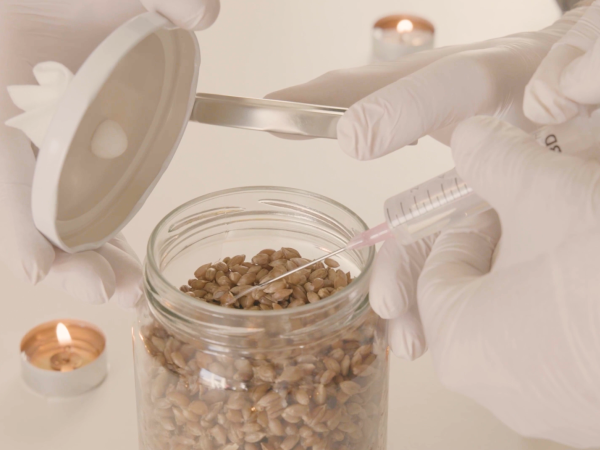
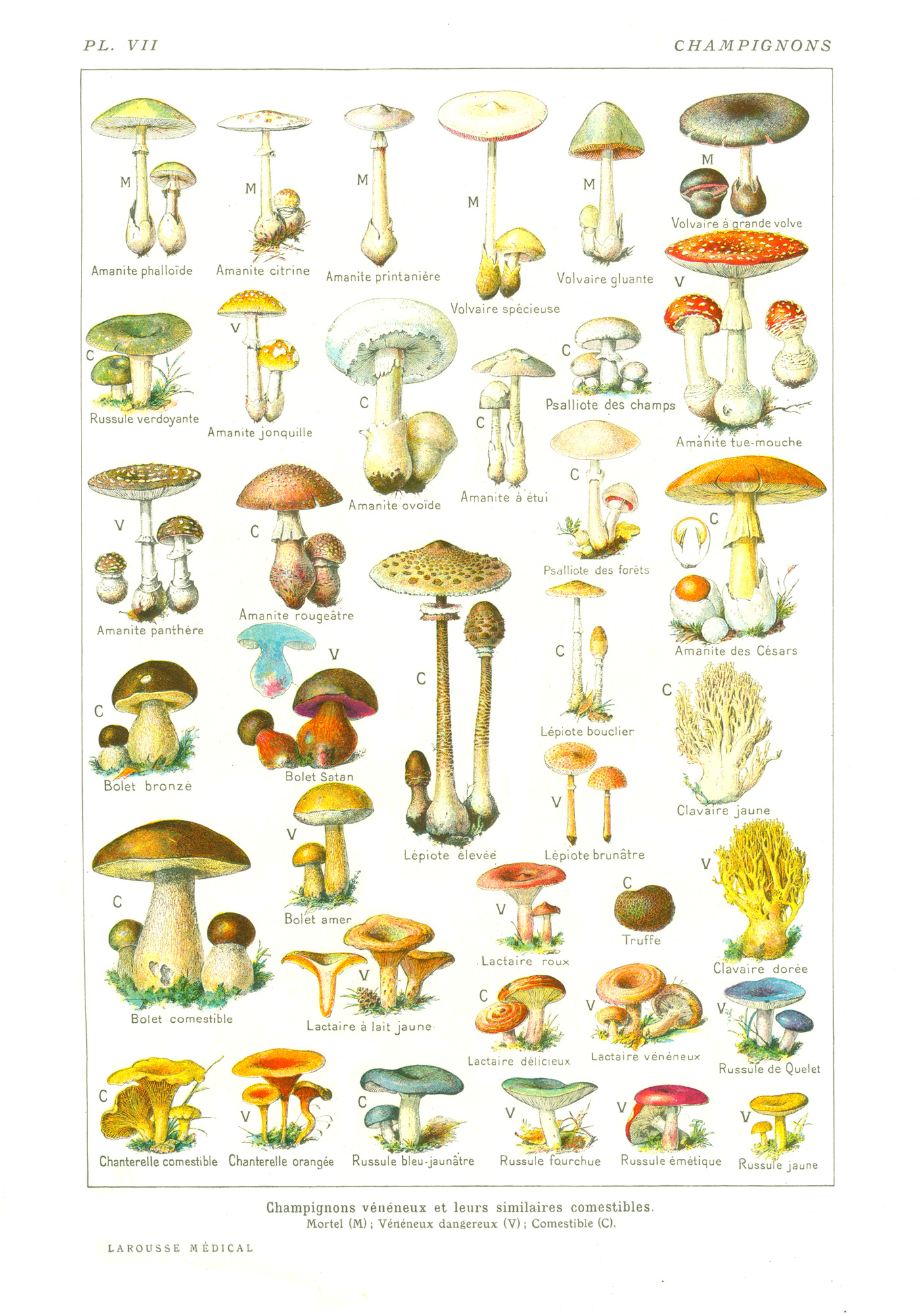
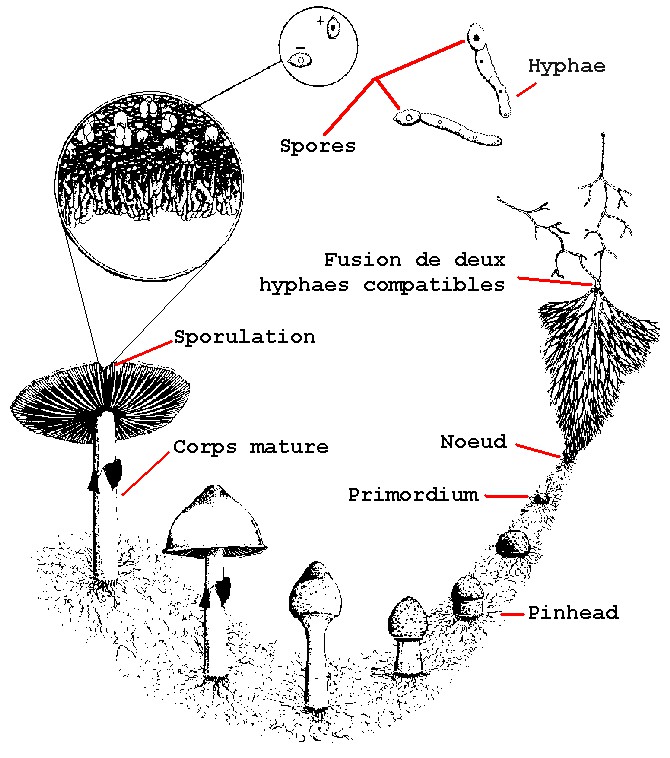
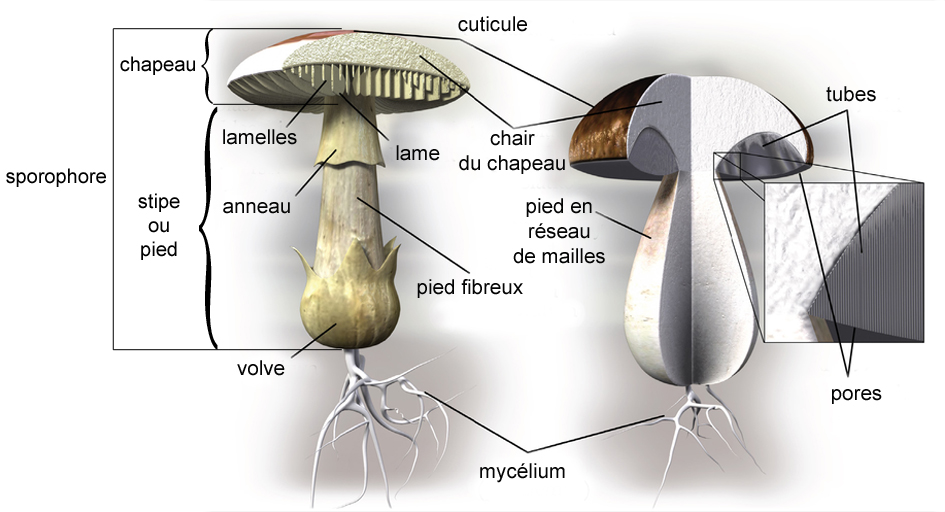
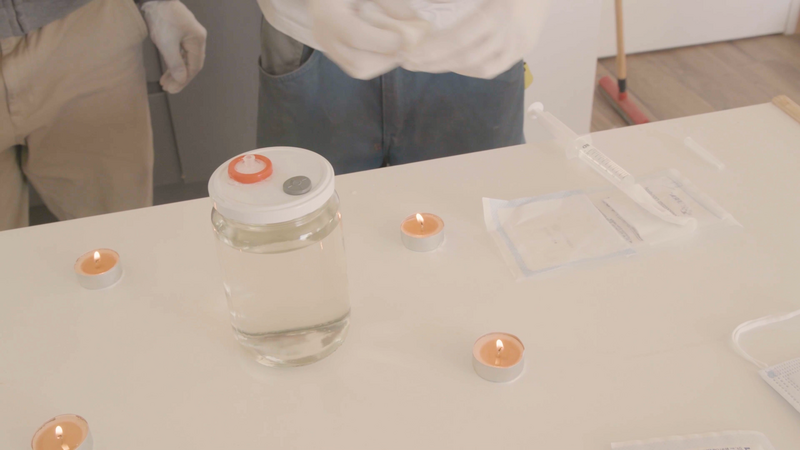
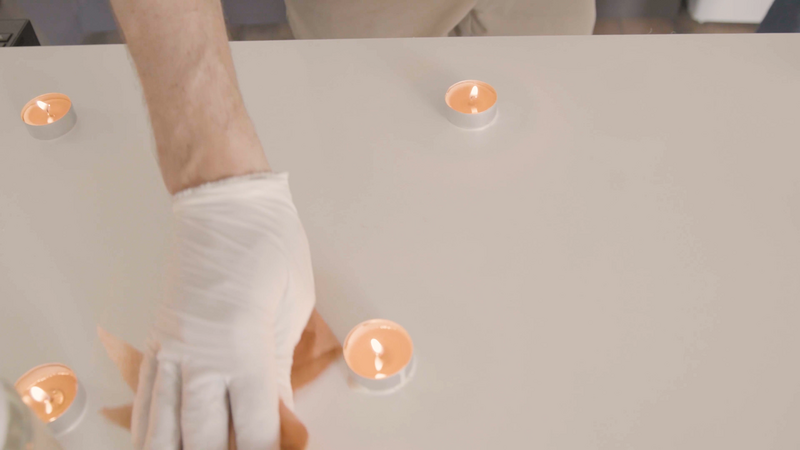
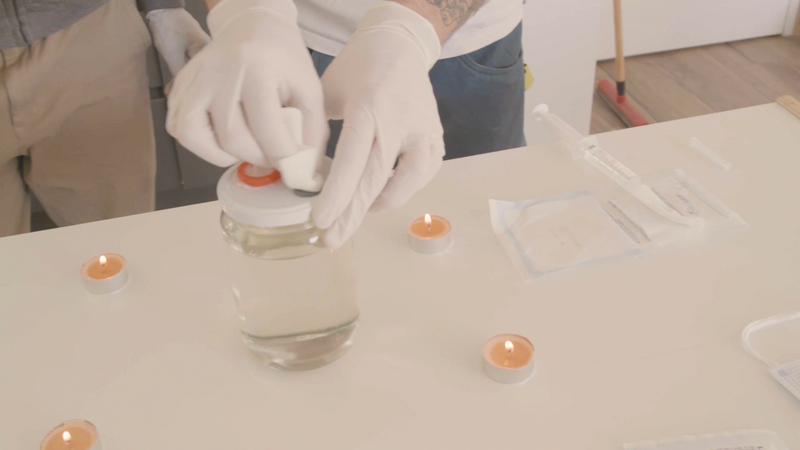
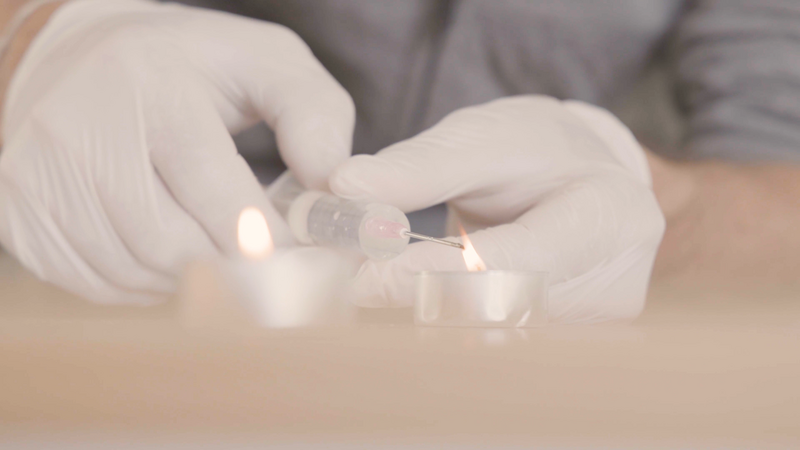
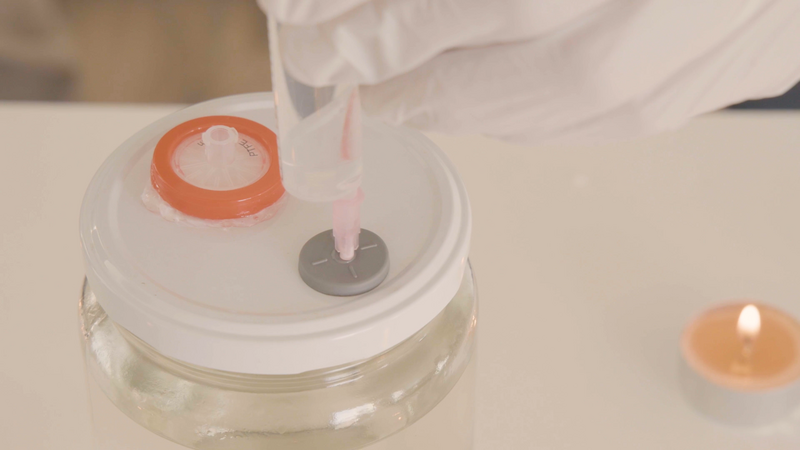
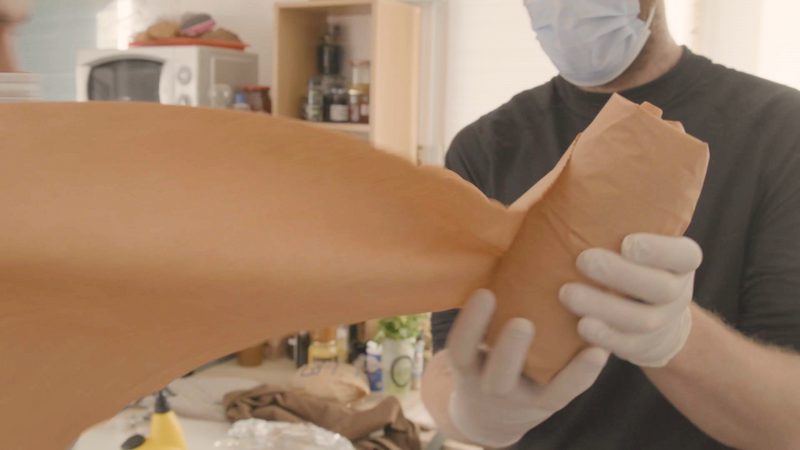
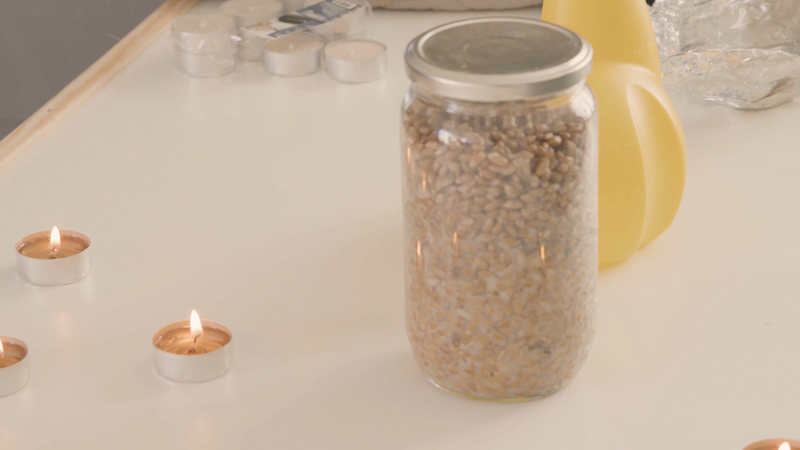
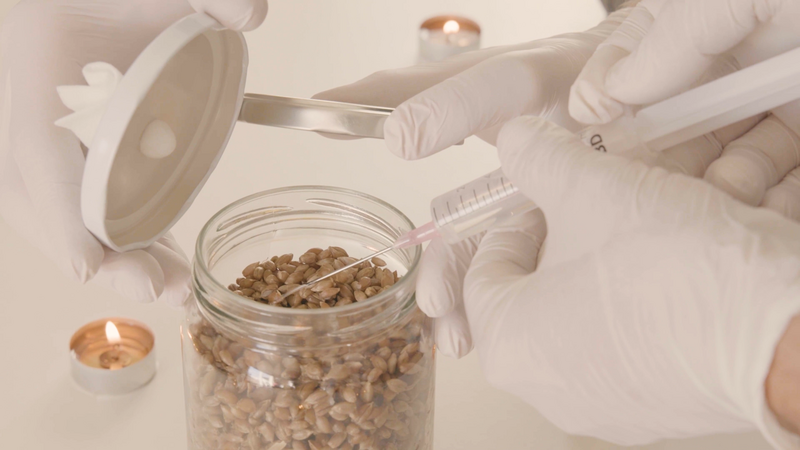
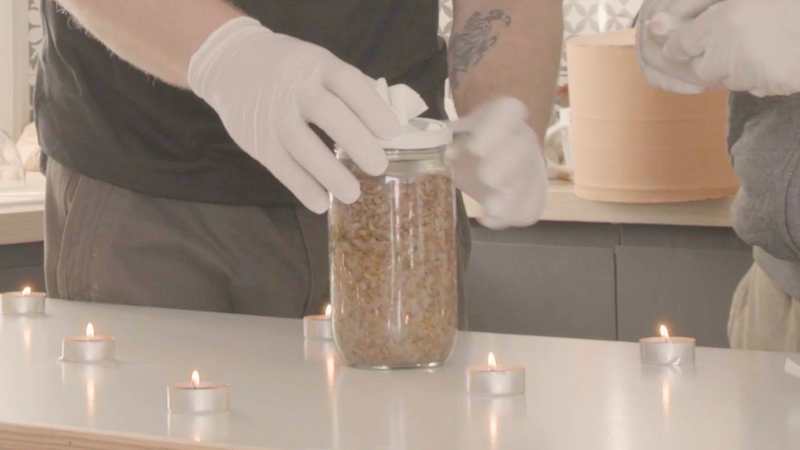
 Français
Français English
English Deutsch
Deutsch Español
Español Italiano
Italiano Português
Português